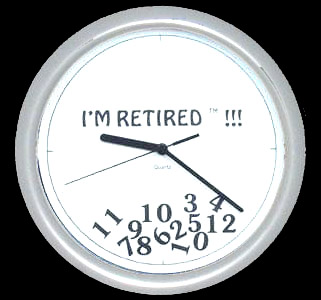

Regular readers know where I stand on retirement: it’s a man-made myth. See the below chapter from my book “Confessions of a Wall Street Whiz Kid” for my views on the subject.
I have also been pounding the drum that health care costs will bankrupt older Americans. In this article from US News & World Report (which you can also read on Yahoo Finance) says, “One of the biggest drivers of poverty in old age is failing health and the associated medical costs.”
I urge all readers to read both the US News article and my chapter.
![]()
Poverty Increasing Among Retirees
By Emily Brandon | U.S.News & World Report LP
Growing numbers of older Americans are spending their retirement years in poverty, according to a recent Employee Benefit Research Institute study. The proportion of older people living below the poverty line has been growing steadily since 2005, and many of those people are falling into poverty as they age and spend down their savings.
Click here to read the article in its entirety.
Growing numbers of older Americans are spending their retirement years in poverty, according to a recent Employee Benefit Research Institute study. The proportion of older people living below the poverty line has been growing steadily since 2005, and many of those people are falling into poverty as they age and spend down their savings.
Click here to read the article in its entirety.
~~~~~~~~~~
Chapter 13:
Retirement: A Man-Made Myth
“Retirement at 65 is ridiculous. When I was 65, I still had pimples.” ~ George Burns
There are a lot of things I can point to as being wrong with our society today, but one glaringly obvious shortfall is our entitlement mentality. In general, we feel we “deserve” a whole lot of stuff that we really have no right to claim. First and foremost, in my opinion, is the concept of retirement.
Make no mistake about it: this whole notion of retirement is a man-made creation. There’s nothing Biblical about us supposedly killing ourselves for 75% of our years to store up enough assets to live off for the last 25%, yet that’s the system our society has built. The system is hopelessly broken and our government can do little more than try once again to kick the can down to the next generation. Somebody is going to pay an awful price.
Let me give you a little background on the phenomenon we call “retirement.”
In her New York Times article entitled “The History of Retirement, From Early Man to A.A.R.P.”, author Mary-Lou Weisman briefly and humorously outlines the history of retirement from Cave Man to modern day, and gives supporting facts about why retirement is not just man-made, but a 20th-century creation.
During the Stone Age, says Weisman, we worked until age 20 then died, usually from unnatural causes. During Biblical times, when people lived to be really old – the Bible says Methuselah died at the ripe old age of 969, thus the adage “older than Methuselah” – people worked until they dropped.
This working-until-your-last-breath mentality prevailed through the centuries even after Chancellor Otto Von Bismarck, nicknamed The Iron Chancellor, introduced the concept of retirement. In 1889, Germany’s Old Age Disability Insurance Bill was enacted to provide a pension for all workers at age 65. Sounds generous? Not really. It was proposed by Bismarck as a way of gaining favor among his countrymen, but it wasn’t as sweet a deal as you might think. The average life expectancy at the time was 45, so there weren’t many around at 65 to collect, and those who did usually didn’t live a whole lot longer.
What Bismarck’s bill did, however, was put in motion the idea that at some point in life we deserve to plop down in our rocking chair and grow mold. Did I say mold? I meant old. As Weisman describes, that single move “set the arbitrary world standard for the exact year at which old age begins and established the precedent that government should pay people for growing old.”
Fast forward to 1905 when world-renowned physician William Osler, in his valedictory address at the Johns Hopkins Hospital, where he had been physician-in-chief, said that workers aged 40 to 60 were less productive than their younger counterparts and those over age 60 were “’useless” on average. That must have been popular. At the time, around 60% of men aged 65 and older were still in the workforce.
But it wasn’t until President Franklin D. Roosevelt signed the Social Security Act of 1935, also known as the federal old-age program, that retirement and entitlements, which were mostly available only to white men, became a part of American culture. The average life expectancy in America was just under 62 years. Roosevelt’s old-age program was funded by a 1% tax on employers and employees on the first $3,000 of a worker’s earnings. Today, the Social Security tax rate is more than 6%.
….read page 2 & 3 HERE
